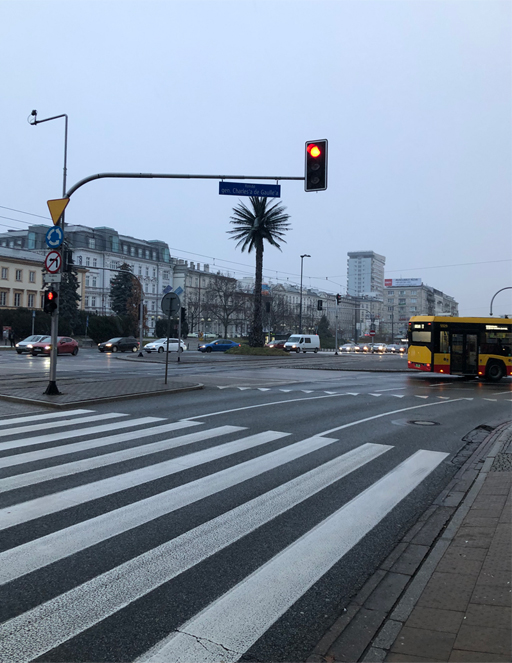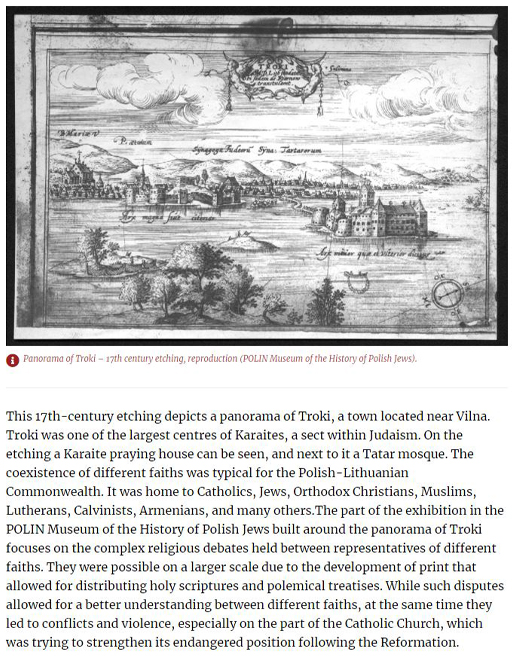3 Connecting past and present
The two videos you watched in the previous section both made connections between past and present. How did they do so?
- The animation about Roger Williams (Video 2) showed how ideas of religious toleration in society have a long history, and that these remain relevant for today.
- The docutube by students in Warsaw (Video 3) discussed how historic migration and place-making by religious minorities can shape attitudes of the same issues today.
The next activity will help you to think about how the RETOPEA clipping database can help you make connections between past and present.
Activity 4
You are now going to take a step back and look at one of the clippings which inspired the docutube created by the Warsaw students you saw in Video 3. This will help you think about how a clipping can be used to help young peoples’ creative planning.
The clipping, which is taken from POLIN Museum of the History of the Polish Jews in Warsaw, is a seventeenth century etching of a panorama of Troki, a city which was part of the Polish–Lithuanian Commonwealth. Look at the clipping and then write in the text box below how you think it may have inspired the students’ docutube. Note the text in the figure has been reproduced below.
Text in clipping
This 17th-century etching depicts a panorama of Troki, a town located near Vilna. Troki was one of the largest centres in of Karaites, a sect within Judaism. On the etching a Karaite praying house can be seen, and next to it a Tatar mosque. The coexistence of different faiths was typical for the Polish–Lithuanian Commonwealth. It was home to Catholic, Jews, Orthodox Christians, Muslims, Lutherans, Calvanists, Armenians, and many others. The part of the exhibition in the POLIN Museum of the History of Polish Jews built around the panorama of Troki focuses on the complex religious debates held between representatives of different faiths. They were possible on a larger scale due to the development of print that allowed for distributing holy scriptures and polemical treatises. While such disputes allowed for a better understanding between different faiths, at the same time they led to conflicts and violence, especially on the part of the Catholic Church, which was trying to strengthen its endangered position following the Reformation.
Discussion
Although the panoramic image is of Troki in the Polish–Lithuanian Commonwealth (which is in present-day Lithuania but still called by its Polish name), not of Warsaw, it got the students thinking about what cityscapes – either those presented in historical images or what they see now when they look out of the window – might tell us about religious diversity, and the presence of minorities, past and present.
The religious architecture of a city today might not reflect its diversity in the past; and as religious diversity changes in the present, new places of worship may appear. The religious diversity and architecture of a city is constantly changing; and many cities have a long tradition of place-making by religious minorities – in the case of this docutube, the Jewish community in Warsaw.
(If you would like to know more about this clipping, you can find the complete version on the RETOPEA website [Tip: hold Ctrl and click a link to open it in a new tab. (Hide tip)] .)
Although the students were inspired by this seventeenth century source, they were able to make specific, powerful links to the present. There were a number of ways in which they did this.
First, to show the importance of remembering the significant Jewish community that had existed in Warsaw before the Holocaust, they included footage of a modern artwork installation in the city called ‘Greetings from Jerusalem Avenue’. The palm tree (of the kind which is common in the city of Jerusalem), stands as a reminder of the historic Jewish community in the city.

The docutube included a second powerful link with the present. At the beginning of the film, the voiceover said: ‘Migrations are now often considered as something negative, especially for the countries that are welcoming migrants.’ This was a reference to a very current issue for the young people in Poland in late 2021 as there was a great deal of political and media controversy about the efforts of migrants, often from war-torn Muslim-majority countries in the Middle East, migrating to Poland, via Belarus. At the time the students were making their docutube, many migrants were waiting on the border of Poland, unable to gain entry but unwelcome in Belarus. The film thus makes a powerful connection between historic and contemporary issues of migration.

